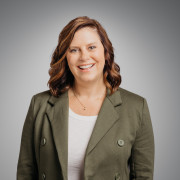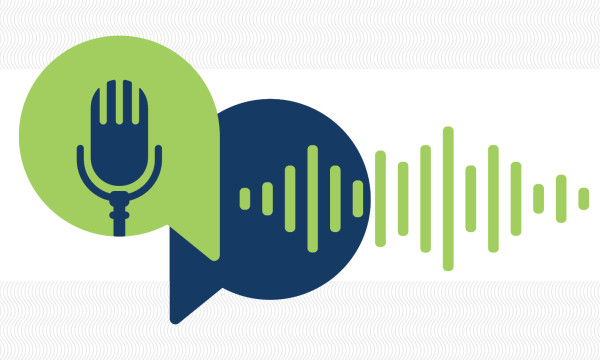What SECURE 2.0’s passing means for plan sponsors

If you’ve been following the news (or reading our Retirement Plan Services team’s quarterly newsletters), you know that we’ve been keeping an eye on SECURE 2.0 Act legislation for well over a year. And finally, as of December 29, 2022, the SECURE 2.0 Act has been signed into law! So what does that mean for you as a retirement plan sponsor? There are several key provisions that will likely affect how you administer your plans. Luckily, we’re here to help break it down for you. Let’s go through the changes that will be implemented over the next few years.
Changes in 2023
For employers who sponsor retirement plans, there are a few provisions going into effect this year that will be of particular interest:
Increase in the required minimum distribution (RMD) age. As of January 1, 2023, the age at which participants must generally start taking RMDs has increased to 73 (up from 72) and will increase again, to 75, starting in 2033. Below is a handy chart that breaks down RMDs based on the year of a participant’s birth.
|
Year born |
Age for RMD |
|
1950 or earlier |
72 (unless worker attained age 70 ½ before 2020) |
|
1951–1958 |
73 |
|
1959 or later |
Guidance is needed to determine whether age 73 or age 75 applies. |
Self-certification of hardship distributions. This provision applies to hardship distributions in 401(k) and 403(b) plans, as well as unforeseeable emergency distributions in governmental 457(b) plans. Under SECURE 2.0, a plan can now allow a participant to self-certify that they have experienced a hardship/emergency distribution event as well as the amount needed to satisfy the hardship/emergency. Of note, however, is that a plan is not required to implement the self-certification feature.
Roth employer contributions. Participants can elect to have their employer contributions made to the plan as Roth contributions. There are a couple of things to note about this provision: 1) Any Roth employer contributions must be 100% vested, and 2) a plan is not required to implement a Roth employer contribution feature. For our part, we believe this feature won’t be able to be implemented immediately because it will take time for payroll providers to be able to accommodate these contributions. It’s worth noting that participants can achieve similar income tax results by electing an in-plan Roth rollover contribution.
Changes in 2024
Many provisions will go into effect next year that are worth your attention. Here’s a quick explanation of the most significant ones.
Matching contributions on student loan payments. Under SECURE 2.0, employers will have the option to make contributions to their company retirement plan on behalf of employees who are currently making student loan payments rather than saving for retirement.
Distributions. SECURE 2.0 allows employers to offer new distribution options. For example, if allowed by the plan, participants can receive a penalty-free distribution of up to $1,000 in most cases for emergency expenses. In all cases, participants may only receive one emergency distribution per year. The distribution amount may be repaid to the plan within three years. If the participant does not repay the distribution amount or make deferrals to the plan equal to the distribution amount, the participant cannot receive another emergency distribution for three years.
A plan may also permit participants to receive penalty-free distributions related to domestic abuse (the lesser of $10,000 or 50% of the participant’s vested account balance). Finally, participants with a terminal illness who receive a plan distribution (no limit) will not have to pay an early distribution penalty regardless of age.
No lifetime RMDs from Roth accounts. SECURE 2.0 ends lifetime RMDs for Roth accounts in 401(k), 403(b), and governmental 457(b) plans.
Required Roth catch-up contributions. With SECURE 2.0, all catch-up contributions made by workers who make more than $145,000 per year must be Roth contributions (i.e., after-tax dollars) beginning in 2024. However, lower-paid employees may still make catch-up contributions on a pre-tax basis. Additionally, plan sponsors must offer a Roth option in order to allow catch-up contributions of any kind.
Changes in 2025
Finally, SECURE 2.0 puts into place a few provisions of note that will go into effect in 2025. Specifically, we’ve put together some additional info on two of these provisions.
Increased catch-up limits. Beginning in 2025, plans may allow participants ages 60-63 to make catch-up contributions equal to the greater of $10,000 (indexed for inflation) or 150% of the effective regular catch-up contribution limit.
Changes for long-term part-time employees. SECURE 2.0 reduces the eligibility period for long-term part-time employees to participate in the elective deferral portion of a 401(k) plan from three consecutive 12-month periods to two consecutive 12-months periods with at least 500 hours of service in each period.
We’re here to help
If all of these provisions are feeling a little overwhelming, don’t worry: Your friendly Retirement Plan Services Relationship Manager is here to help. If you have questions or would like to talk through these provisions in more detail, simply reach out to your Relationship Manager or the RPS department at UBT and we can go from there.
Learning Center articles, guides, blogs, podcasts, and videos are for informational purposes only and are not an advertisement for a product or service. The accuracy and completeness is not guaranteed and does not constitute legal or tax advice. Please consult with your own tax, legal, and financial advisors.




